Tucson, Arizona is the third fastest warming city in the U.S., but we can reduce urban temperatures by over 10˚ F degrees in the shade of vegetation.
By planting the rain and multi-use native vegetation, previously uninviting hot and exposed public rights-of-ways can become welcoming cool and shaded, food-producing public forests that shelter and enhance public walkways and streets (see figures 1A, B and figures 2A, B). This leads to better health as more people walk, bicycle, meet up, and interact.
Stormwater running off the streets in turn becomes a free irrigation source for the forest by directing the water to the street-side plantings via curb cuts and curb cores. This practice also reduces downstream flooding, naturally filters pollutants, and helps recharge our groundwater.
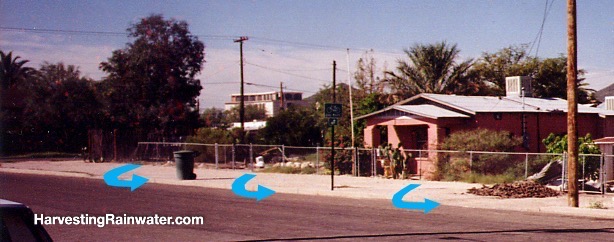
Barren public right-of-way draining stormwater to the street 1994.
Blue arrows denote water flow.
Reproduced with permission from “Rainwater Harvesting for Drylands and Beyond, Volume 2, 2nd Edition” by Brad Lancaster.
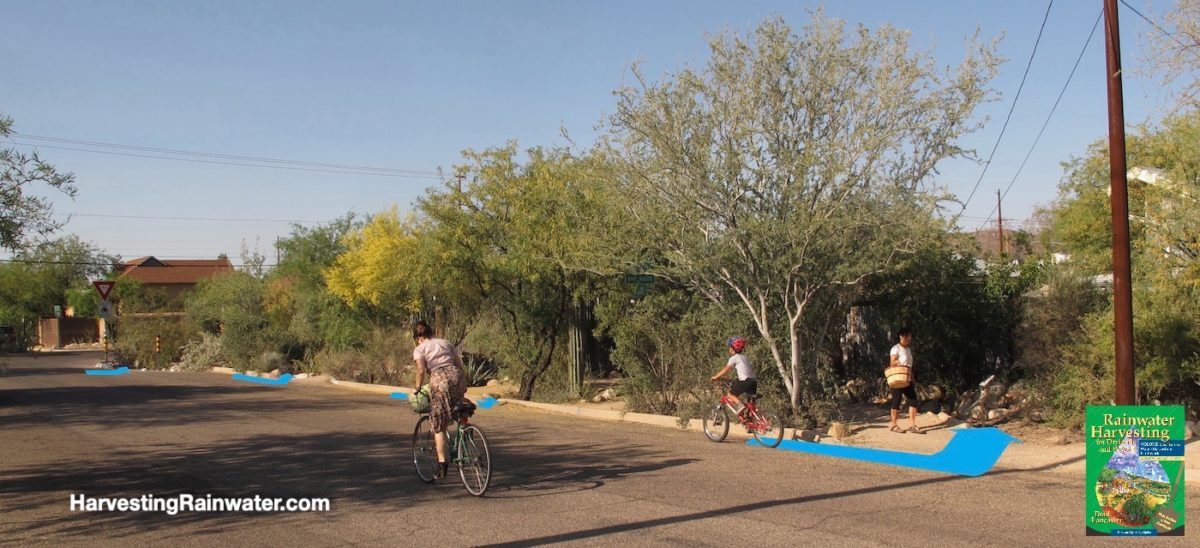
Vibrant public forest harvesting street runoff to grow shade for the public walkway and street.
Reproduced with permission from “Rainwater Harvesting for Drylands and Beyond, Volume 2, 2nd Edition” by Brad Lancaster.
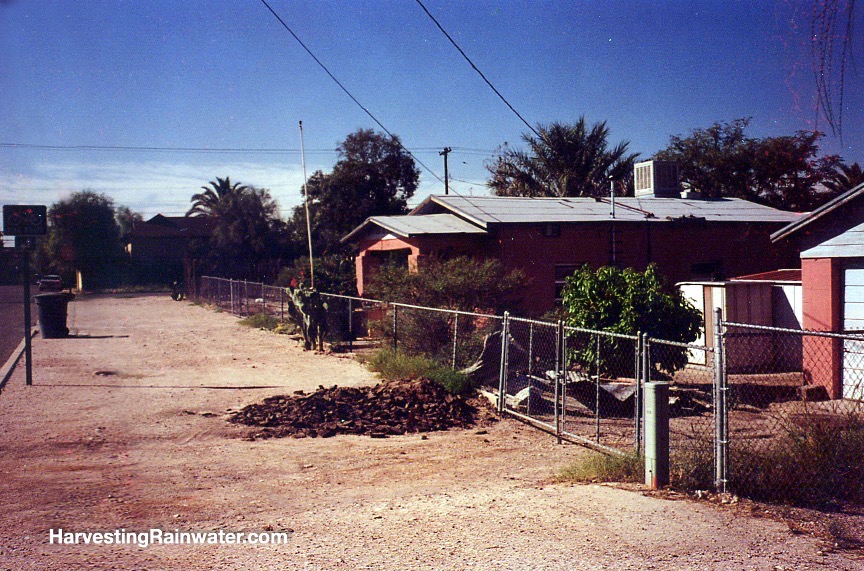
Hot, barren, and exposed public walkway.
Photo: Brad Lancaster
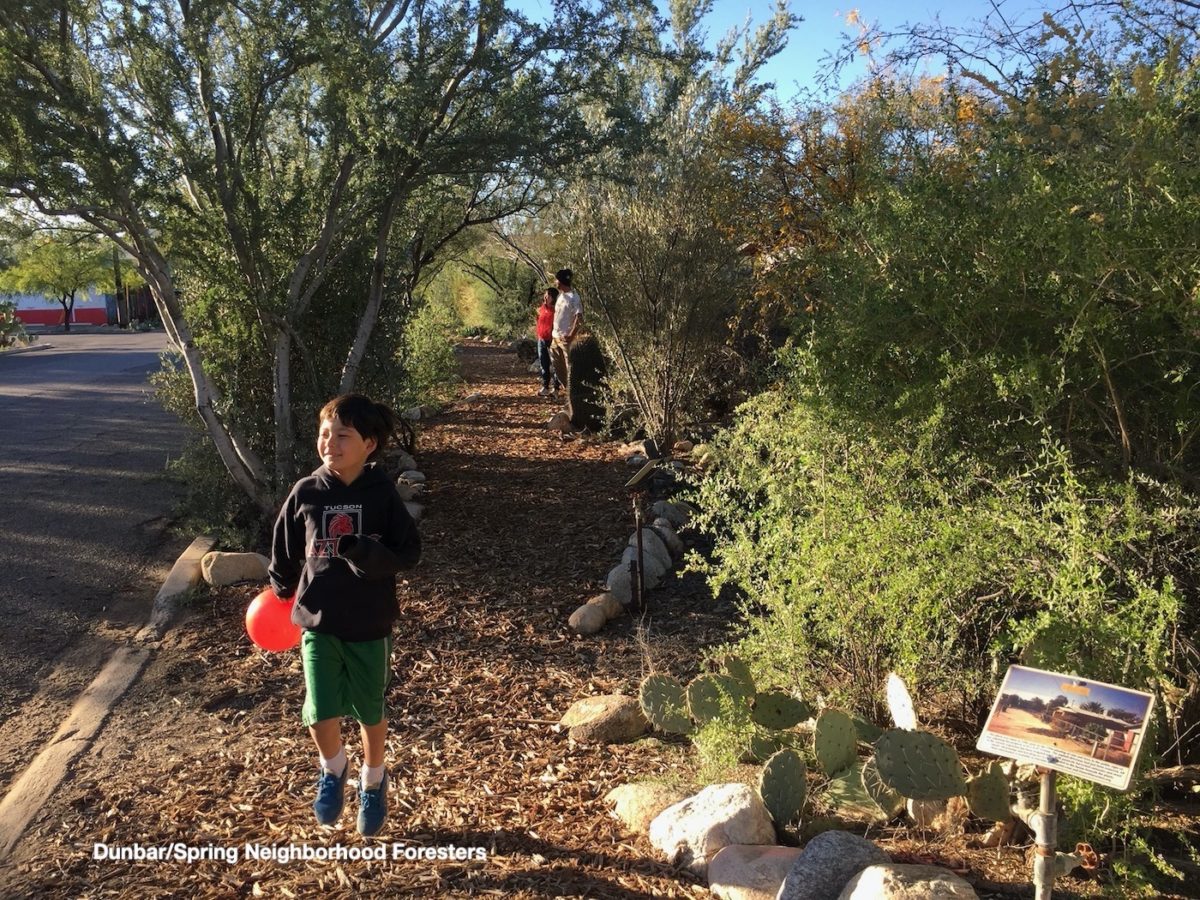
Shaded public walkway full of life.
Photo: Brad Lancaster
Our local actions have global consequences.
The following is reproduced with permission from “Rainwater Harvesting for Drylands and Beyond, Volume 2, 2nd Edition” by Brad Lancaster…
“There is a powerful, beneficial partnership between the planet’s hydrologic cycle circulating life-giving water and the carbon-based, soil-building, and carbon-cycling life in the soil—known as the soil-carbon sponge. According to climate scientist and soil microbiologist Walter Jehne, the vast majority of the heat dynamics and hydrologic cooling on Earth is governed by our planet’s hydrologic cycle. And that cycle, coupled with the soil-carbon sponge, helps maintain a stable climate on our planet such that the amount of heat released to space is equal to incoming heat from the sun—though our planet has been holding onto more heat than it releases since about 1750 due to human-influenced climate change, and the destruction of the soil-carbon sponge.”
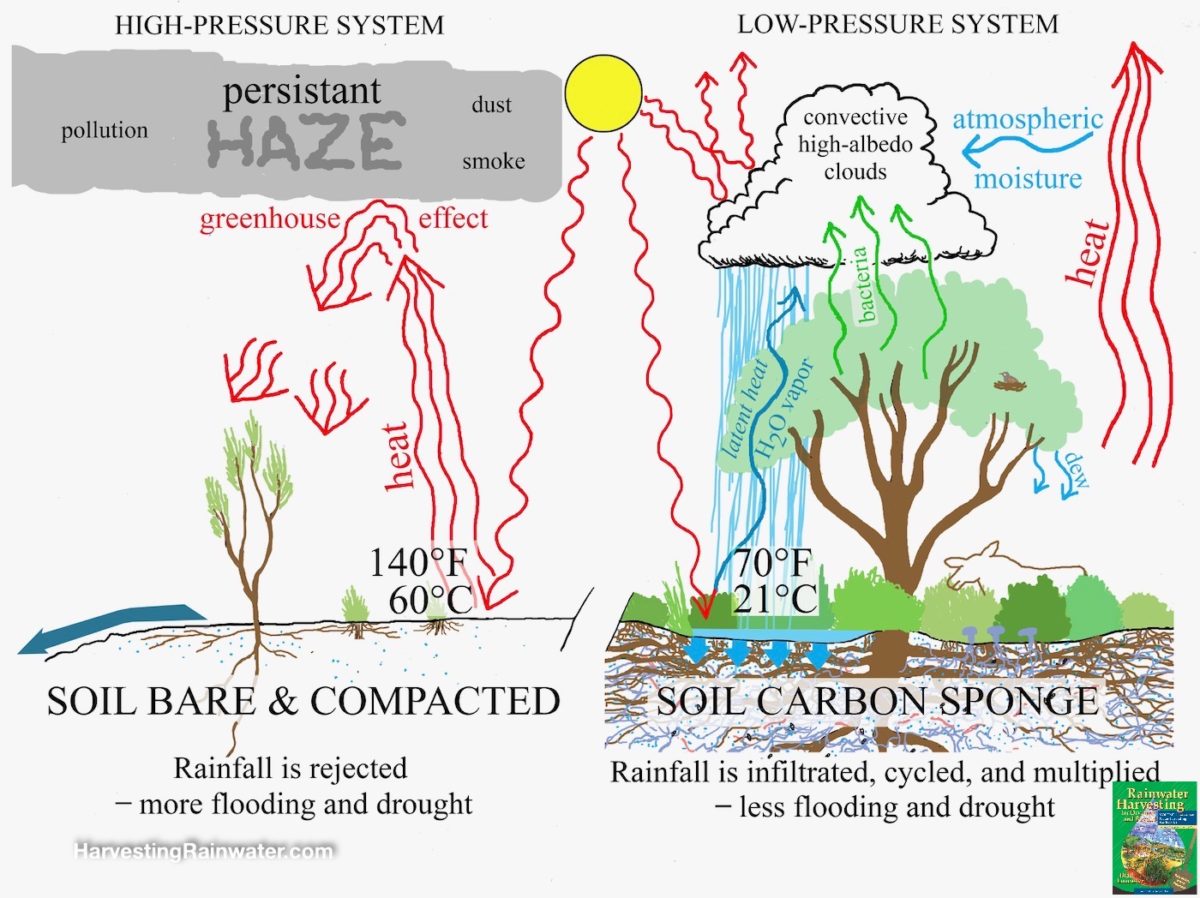
The condition of the soil-carbon-sponge controls the fate of rainfall and affects climate. Adapted from “Recognizing the Soil Sponge” by Peter Donovan, SoilCarbonCoalition.org.
Reproduced with permission from “Rainwater Harvesting for Drylands and Beyond, Volume 2, 2nd Edition”
Neighborhood forestry, as we advocate, regrows the soil-carbon-sponge and enhances the hydrologic cycle, improving the climate for all.
For more on how we plant rain and forests—and how you can do likewise—see our page on:
